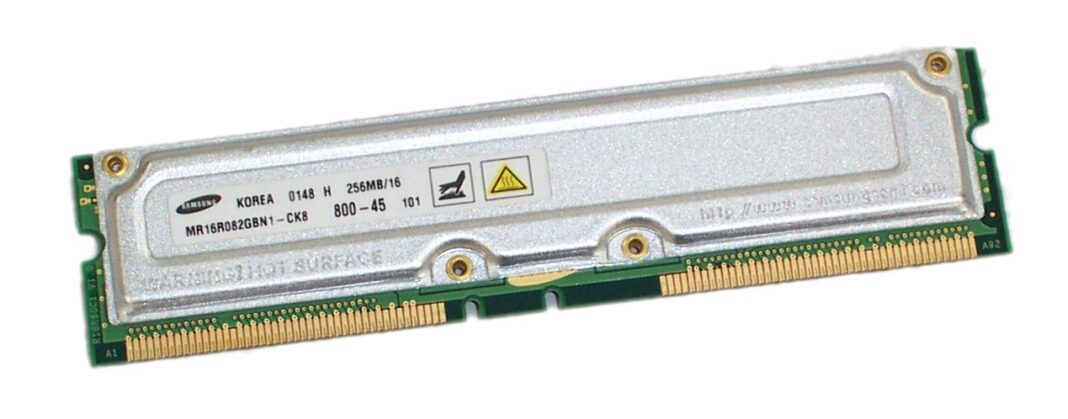RDRAM, or Rambus Dynamic Random-Access Memory, was a memory technology that gained attention in the late 1990s and early 2000s. Although it was once hailed as the future of memory technology, it eventually lost its popularity to other memory standards like DDR. However, with advancements in technology, it’s worth exploring whether RDRAM still has a place in modern computing. In this article, we will delve into the history of RDRAM, its advantages and disadvantages, and whether it remains a usable option in today’s computing landscape.
Understanding RDRAM: RDRAM was developed by Rambus Inc. as a high-speed memory technology to be used in personal computers. It introduced a new architecture that differed from the more widely adopted SDRAM (Synchronous Dynamic Random-Access Memory) and DDR (Double Data Rate) technologies. RDRAM offered higher bandwidth and lower latencies, promising improved performance and efficiency.
The Rise and Fall of RDRAM: RDRAM initially generated excitement due to its potential for delivering outstanding performance. However, its high production costs and licensing fees limited its adoption by memory manufacturers, which resulted in higher prices for end-users. Additionally, compatibility issues with existing systems and the emergence of faster and more affordable DDR memory led to a decline in RDRAM’s popularity.
Advantages of RDRAM: Despite its decline, RDRAM still has a few advantages worth considering. One of its notable strengths is its high bandwidth, which allows for faster data transfer rates compared to traditional memory technologies. This makes it suitable for memory-intensive applications such as video editing, 3D rendering, and scientific simulations. RDRAM’s low latency also contributes to its potential performance advantages in specific use cases.

Disadvantages of RDRAM: RDRAM’s main drawback is its limited compatibility. It required a specific memory slot on the motherboard and dedicated controllers, making it incompatible with existing systems that were designed for SDRAM or DDR memory modules. Additionally, the higher cost associated with RDRAM, due to licensing fees and limited manufacturer support, made it less appealing to the average consumer.
Modern Alternatives: In today’s computing landscape, DDR4 and DDR5 memory are the dominant standards, offering higher capacities, improved performance, and better compatibility. These memory technologies have evolved significantly since the introduction of RDRAM, incorporating advancements such as faster data rates, lower power consumption, and increased memory densities. As a result, RDRAM finds itself largely outdated and incompatible with modern systems.
Niche Applications: Although RDRAM’s usage in mainstream computing has diminished, it may still find relevance in certain niche applications. For example, in legacy systems that were designed specifically for RDRAM, upgrading to DDR memory may not be a viable option without substantial modifications. Additionally, in specific industries that rely on RDRAM-based systems, such as aerospace or defense, finding replacement parts and maintaining existing infrastructure may necessitate the continued use of RDRAM.
RDRAM, once a promising memory technology, has faded into relative obscurity in today’s computing landscape. While it offered advantages in terms of bandwidth and low latency, its limited compatibility, high costs, and the rapid evolution of DDR memory technologies have rendered it obsolete for most users. However, in niche applications or legacy systems, RDRAM may still serve a purpose. As technology continues to advance, it’s essential to evaluate memory options that align with compatibility, cost-effectiveness, and performance requirements, keeping RDRAM’s limitations and alternatives in mind.





